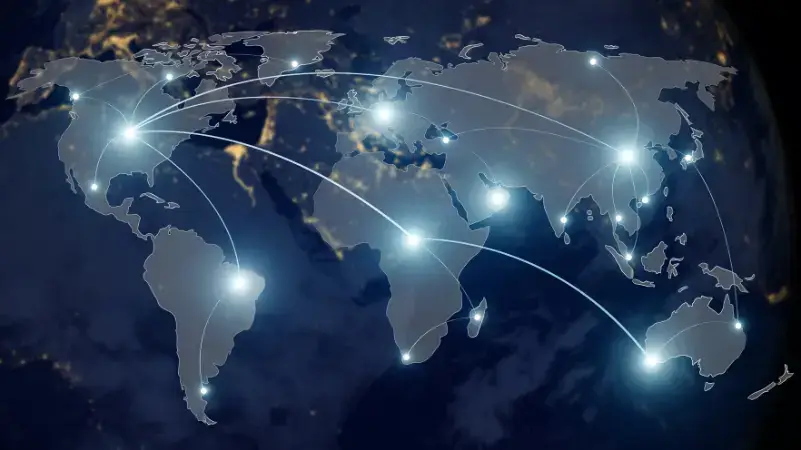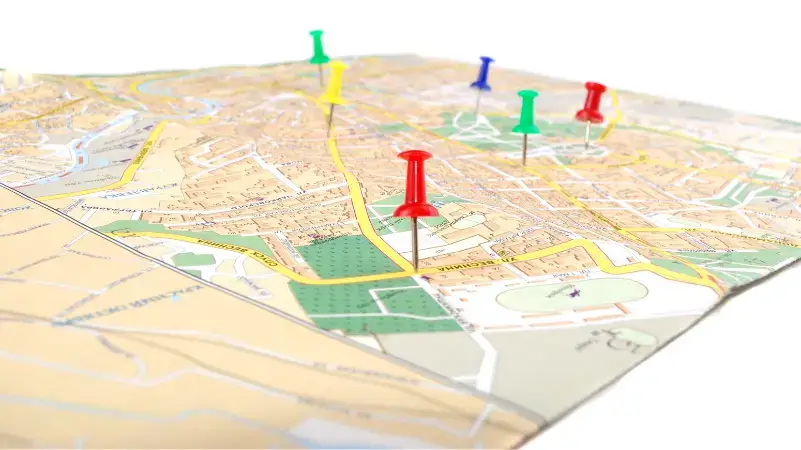Zip code maps are a powerful tool for visualizing and analyzing geographic data based on zip code boundaries. With their ability to concisely represent areas defined by zip codes, these maps have become invaluable in various industries and applications.

Created in Canva by author
For example, public health organizations can use zip code maps to track the spread of diseases, identify hotspots, and implement targeted interventions to control outbreaks.
In contrast, retail and e-commerce businesses can use these maps to visualize customer locations and identify optimal store or warehouse locations based on market demand across many zip codes. This is a customized marketing strategy known as geo-targeting.
What is Geo-Targeting?

Created in Canva by author
Geo-targeting is a digital marketing technique used by online businesses to provide visitors with location-specific content based on their geographic location.
This can be helpful in providing a more personalized and relevant experience for each visitor and improve the effectiveness of off-site marketing efforts.
In addition to improving the effectiveness of marketing efforts, geo-targeting can also be used to provide a better onsite experience for visitors.
By tailoring the content and messaging on a website to be more relevant to a visitor's location, businesses can increase engagement and reduce bounce rates.
This can be especially useful for businesses with a global reach, as it allows them to provide localized content to visitors from different regions.
What Are the Key Benefits of Creating Zip Code Maps?

Created in Canva by author
Visualizing Geographic Data
By mapping data onto zip code boundaries, users can visually compare and contrast variables such as population density, income levels, or customer distribution, enabling analysts to understand how these factors vary geographically.
One of the critical advantages of Zip Code mapping is its ability to highlight variations and disparities in data. For example, suppose you're analyzing customer demographics for a retail business.
In that case, a zip code map can reveal clusters of customers in specific areas, helping you identify target markets or regions with untapped potential.
Similarly, when studying socioeconomic factors, such as poverty rates or educational attainment, zip code maps can visually showcase disparities between neighborhoods or regions, shedding light on areas that may require targeted interventions or resources.
Identifying Patterns and Trends
Another benefit of zip code maps is that they can help users identify spatial patterns and clusters. For example, in retail and marketing, zip code maps can help identify areas with a high concentration of potential customers or target demographics.
Businesses can pinpoint regions where their offering is in high demand by analyzing customer data and concept mapping it onto zip code boundaries.
This information enables strategic decision-making, such as focusing marketing efforts on specific zip codes or identifying areas for potential expansion. Moreover, others use zip code maps to identify target markets or areas of opportunity.
Businesses can locate zip code areas that align with their target market criteria by analyzing various data variables, such as income levels or consumer preferences.
Companies are then in a place where they can tailor their marketing strategies, allocate resources effectively, and maximize their probability of success.
Better Resource Allocation
With zip code maps, businesses can optimize resource allocation and planning. Organizations can identify areas with the highest potential for growth or demand by analyzing data on factors such as population density or competitor locations.
This information enables them to strategically allocate resources, such as marketing budgets, inventory, or service coverage, to target the most promising zip code areas.
For instance, a retail chain can use zip code maps to identify underserved regions and determine where to open new stores for maximum market coverage.
By aligning resource allocation with spatial insights, businesses can make data-driven decisions that maximize efficiency and profitability.
Next Steps
Exploring various tools and resources is essential to harness the potential of zip code mapping fully.
Numerous online platforms and software applications provide user-friendly interfaces and advanced functionalities for creating and customizing zip code maps.
These tools offer features such as data integration, visualization options, and interactive capabilities that can take your mapping experience one step further.
So take the time to create zip code maps and provide the personalized experience potential customers are looking for, and take your digital marketing campaigns to the next level.

